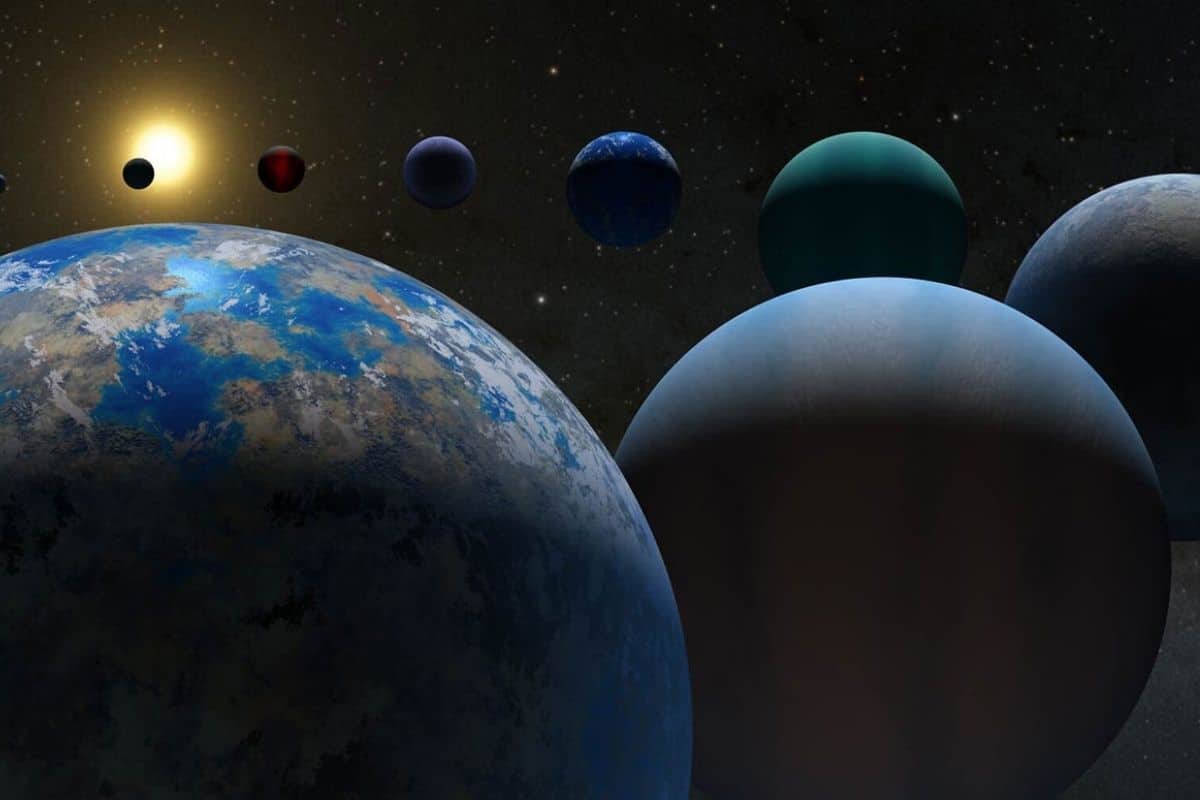
The crown on the exciting journey of discovery through the universe.
Not so long ago, we lived in a universe with only a small number of known planets, all of which revolve around our sun. That changed in 1992, when astronomers announced that they had discovered some planets outside our solar system for the first time. Now researchers come up with a special cosmic milestone. Because although the number of known exoplanets has been close to 5000 for a while, it is now official: we have passed 5000!
Cosmic Milestone
That extraordinary frontier was crossed a few days ago, when 65 new exoplanets were added to the prestigious NASA Exoplanet Archive† It records discoveries of exoplanets that have been confirmed using multiple detection methods or analytical techniques. It means that we currently know of the existence of as many as 5000 planets outside our solar system! A beautiful cosmic milestone and a crown on 30 years of exciting exploration through the universe. “It’s not just a number,” said researcher Jessie Christiansen. “Each of these exoplanets is a new world, a brand new planet. I get excited about all of them, because in fact we don’t know anything about it yet.”
Back in time
It all started on January 22, 1992, when Polish astronomers Aleksander Wolszczan and Maciej Konacki discovered two exoplanets: PSR B1257+12 c (Poltergeist) and PSR B1257+12 d (Phobetor). These were immediately very strange and bizarre worlds, because these two planets orbit around a pulsar – a rapidly spinning neutron star that forms when large stars reach the end of their lives and explode. Astronomers tracked down the first two exoplanets by measuring small changes in the timing of the pulses. It was revolutionary. “It essentially opened all the floodgates,” says Wolszczan. “If you can find planets around a neutron star, they should be everywhere.”
exoplanets
Nothing turned out to be less true. And in the years that followed, that assumption was amply proven. In the course of just a few decades, thanks in particular to the Kepler space telescope, thousands of (candidate) exoplanets were discovered; each and every one of them special worlds. For example, the more than 5,000 planets found so far include small, rocky worlds such as Earth, as well as gas giants many times larger than Jupiter. Also, so-called ‘hot Jupiters’ are discovered; gas giants with scorching temperatures that – unlike the gas giants we know from our own solar system – are very close to their star. There are also so-called ‘super-Earths’; rocky worlds bigger than our own and “mini-Neptunes”; smaller versions of Neptune. Add to this mix planets orbiting two stars at once and planets stubbornly orbiting collapsed remains of dead stars and the picture is complete.

The more than 5,000 exoplanets that have been confirmed so far include several species — some similar to planets in our solar system, others vastly different from anything we know of. Image: NASA/JPL-Caltech
Incidentally, those 5000 known exoplanets are most likely just the tip of the iceberg. Because our galaxy may contain hundreds of billions of planets. And so many are still waiting to be discovered.
New Age
At the same time, Wolszczan argues that we are now entering a new era that extends beyond just adding new planets to the list. Thanks to planet hunter TESS, the recently launched James Webb telescope and the still under construction Nancy Grace Roman Space Telescope launched in 2027, discovered exoplanets can also be characterized. By capturing the light from the atmospheres of the exoplanets and reading out which gases are present, it can be determined whether a planet is habitable or even inhabited.
Life
It means that the chances of encountering extraterrestrial life are increasing. “In my view, it’s inevitable that we’ll find ‘some kind’ of life somewhere—most likely a primitive kind,” Wolszczan says. “The close connection between the chemistry of life on Earth and the chemistry found throughout the universe, as well as the detection of widespread organic molecules, suggests that finding life is only a matter of time.”
That, however, is still in the future. For now, NASA is celebrating with the confirmation of 5,000 planets beyond our solar system. “I’m really getting a sense of accomplishment and awe at what’s out there,” said William Borucki, principal investigator of the now-retired Kepler mission. “None of us expected this huge variety of planetary systems and stars. It’s just great.”
Source material:
†Cosmic Milestone: NASA Confirms 5,000 Exoplanets” – NASA
Image at the top of this article: NASA/JPL-Caltech